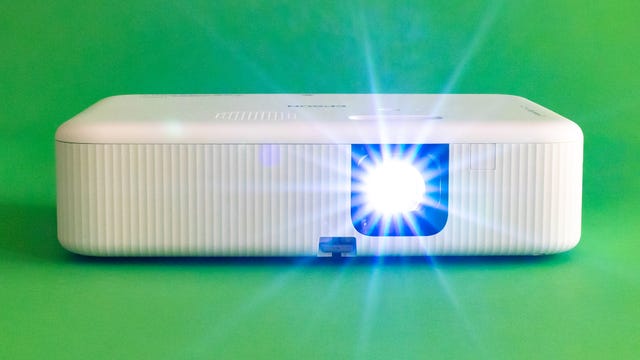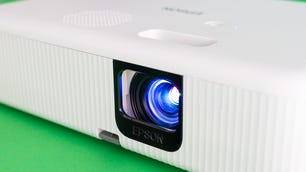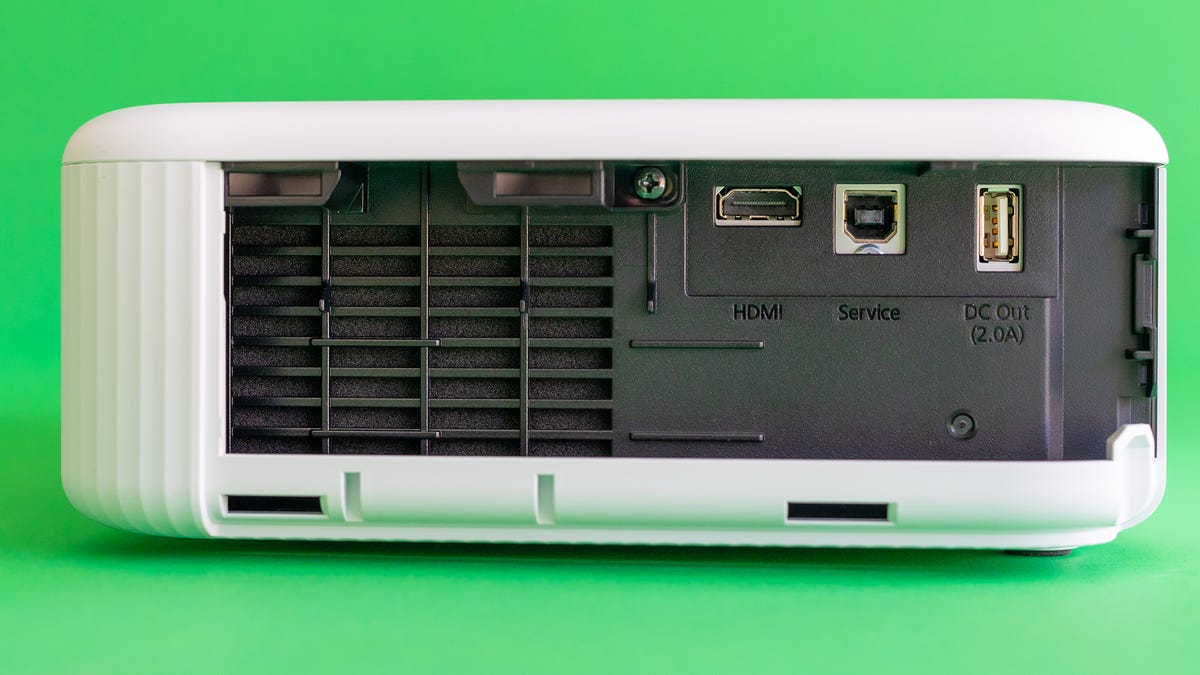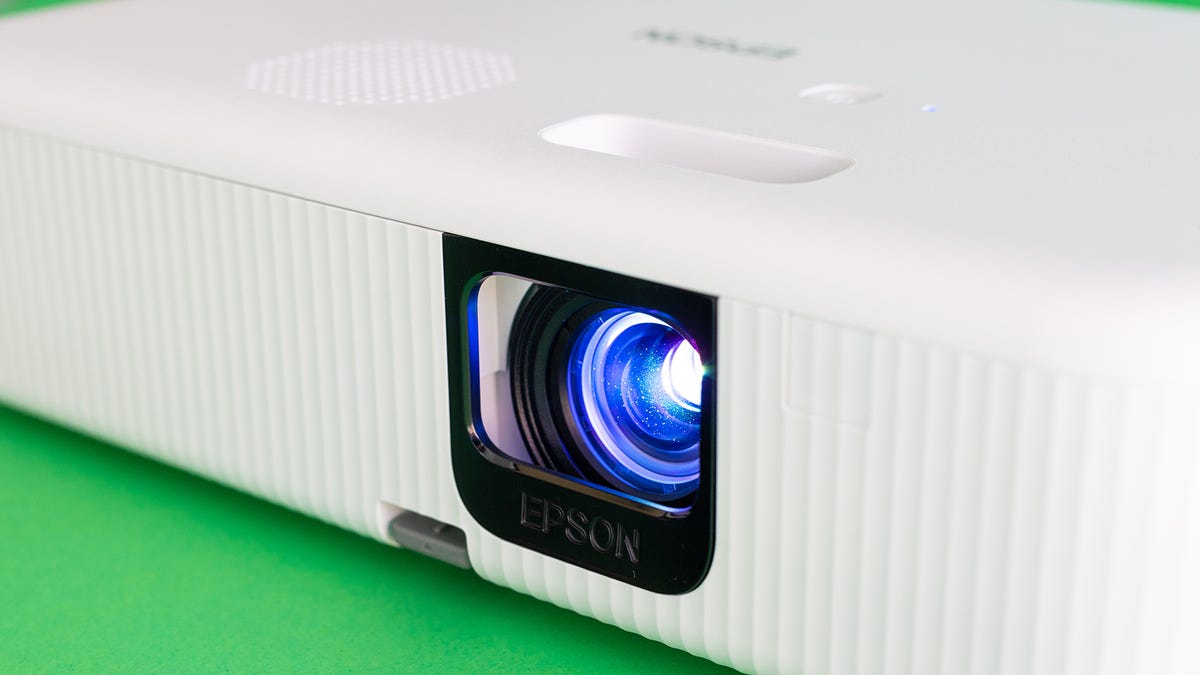Epson EpiqVision Flex CO-FH02 Review: The Brightest Projector We've Ever Tested
Its overall image quality isn't great, but for the price and light output, it might look good enough.
There are two distinct camps in the cheap projector realm. On one hand are highly portable, battery-powered projectors; we've reviewed a few, but honestly, none are bright enough for a reasonable size screen. The other camp eschews the battery for a brighter image but cuts costs in other ways. This type requires plugging into a wall as a result, but for backyard movie nights, the need to run an extension cord isn't a problem.
Enter Epson's EpiqVision Flex CO-FH02. It's in the second camp, costing around $600 while having the small size and built-in streaming that make impromptu movie-watching easy. What makes the FH02 especially notable is its light output. It is the brightest projector we've ever tested, and we've tested a lot of bright projectors.
LIKE
- Insanely bright
- Built-in streaming
- Great price
DON'T LIKE
- Mediocre contrast ratio
- No zoom or lens shift
- Odd input placement
While brightness is important in a projector, not just because it determines how big an image you can create, it's only one aspect of overall picture quality. Like many lower-priced projectors, that's where the FH02 falls short. Its image quality isn't great, but for the price and light output, it might look good enough. Here's what we found in our testing.
On paper
Let's talk about the FH02's most important feature: that extreme brightness. Epson claims 3,000 lumens. I measured 2,094 in the Cinema mode, which had fairly accurate color and color temperature. In the less accurate Dynamic mode, it puts out a monstrous 3,261. These are some real mind-bending numbers. It wasn't long ago that even 1,000 lumens was impressive. With this level of brightness you could have a 150-inch screen and it'd still be brighter than most projectors creating a 100-inch image.
It's worth noting that the second and third brightest projectors we've ever measured were also Epsons. The Home Cinema 880 was in the same general category as the FH02. The more expensive, and 4K, HC2350 is a more well rounded traditional home theater projector. Both tested just slightly less bright than the FH02.
As impressive as the FH02's numbers are, the rest of the feature list shows what was left out to keep the price down. There's no zoom or lens shift, for instance. If you want to make the image smaller or larger, you need to physically move the projector closer or farther from the screen. There's a mechanical slider on the top for focus.
The single HDMI and USB connections are hidden behind a removable side panel.
Connections and streaming
The "back" panel of the FH02 is actually on the side. Not particularly weird in itself, but the connections are hidden behind a removable panel. If you want to use the HDMI you essentially have to leave the side cover off. It's as if Epson really doesn't want you to regularly use external inputs.
Instead, there's streaming via a bundled Android TV stick which fits under this cover. The stick takes both over the HDMI and USB connections, so if you want to connect a game console you'll have to choose. The Android TV streaming interface is similar to the one you'd find on the new Chromecast or TVs with Android or Google TV. Most importantly, the OS has the full versions of popular streaming apps, not the cut-down versions from Aptoide that are found on many budget projectors.
The small, onboard 5-watt speaker doesn't actually sound that bad. It doesn't play particularly loudly, but at max volume it doesn't distort. There's not much bass, of course, but voices are clear. There's no dedicated audio output, but you can connect the included streaming stick to headphones or a separate speaker via Bluetooth.
The projector comes with two remotes. One is infrared (IR) and the other is Bluetooth. The latter doesn't need line of sight, but it only really controls the streaming stick. You can use it to turn the projector off, but to turn the PJ back on you'll need the IR remote. You can use the IR remote to control the streaming device, so I'm not sure why you'd need the Bluetooth remote at all unless you used the streaming stick on a different display.
There's no zoom or lens shift.
Picture quality compared
Comparison projectors
The Anker Mars II Pro is roughly the same price as the Epson, but it is portable. The Anker is one of our favorite portables, to be fair, but it's here to demonstrate what projectors like the Anker lose when you add a battery at this price. The BenQ HT2050A is one of our long-time favorites. It's being discontinued in favor of the slightly more expensive HT2060, but as of this writing it's still available and only slightly more than the Epson reviewed here. I connected all three to a Monoprice 1x4 distribution amplifier and viewed the projectors side-by-side on a 102-inch 1.0-gain screen.
I think if you grabbed the average person off the street (please don't; that's kidnapping), there is no way you could convince them these three projectors are anywhere near the same price. The Epson has TV-levels of brightness compared to the BenQ, and the Anker looks like someone told you what the movie was and you imagined it. Brightness is important with projectors, and if all you want is a bright image to make a big image on a wall, this Epson is ideal. It is monumentally bright -- Olympic-class, eye-searing brightness.
The IR remote controls both the projector and the included streaming stick.
Beyond that, things don't go the Epson's way. Contrast, for instance, is way better on BenQ. Eight times better, actually. So the BenQ's image has much more punch and apparent "depth." In comparison, the Epson looks far more washed out. That said, the BenQ doesn't look as much better as you'd think, given the numbers. Or to put it another way, the Epson looks "fine" contrast-wise. It's definitely watchable, but its stunning brightness is doing a lot of heavy lifting. Between these two I'd pick the BenQ to watch a movie for sure, but it's not like I'd defenestrate the Epson in a moment of contrast ratio snobbery.
Color-wise, there's not nearly as much of a difference. The BenQ is a bit more accurate, so things look a little more realistic side-by-side, but the Epson is quite close. Close enough that, on its own, you won't notice any egregious color issues. This isn't one of those ultrabright projectors that jacks the colors to cartoony weirdness to eke out every last lumen. Some projectors are more accurate, but for ~$600 it's quite good.
Though it's the same resolution, the BenQ's DLP-created image looks a little sharper than the FH02's LCD-created image. It's not enough of a difference either way to be a determining factor, as this is really a story about brightness and contrast ratio.
The poor Anker really can't compete, picture-quality-wise, but it's here to prove a point. Technically, it has a better contrast ratio than the Epson, but it's so dim in comparison it's hard to tell. The Anker's colors are far less realistic. If you absolutely need something that works without a power cable, the Anker is great for that. If you can run an extension cord to your movie night locale, the Epson is absolutely the way to go. With any size screen it will produce a far brighter, better image. For something to watch regularly, where you want some decent image quality, the BenQ.
Loads of lumens
I often compare projectors like this to classic muscle cars. Muscle cars from the '60s and '70s were good at one thing: acceleration. They couldn't stop, turn or do anything a more well-rounded car could do. They were cheap and fast in a straight line. The Epson CO-FH02 is that, in projector form. It's inexpensive and retina-searing bright, but the picture quality beyond that is below average. It's bright, but it's washed out. The colors aren't quite as good as some others, but they're not bad.
Considering the price, I'd call the CO-FH02 a win. If you have a light-controlled room and can spend a bit more, I'd say check out the BenQ HT2060. Its picture is fantastic and its LEDs never need replacing, which brings its lifetime ownership cost way down. As good as the HT2060 looks, though, it can't remotely compete with the FH02's light output. The Epson is more than twice as bright.
If you want something for a backyard movie night -- with the biggest projected screen possible for the least amount of money -- or you just don't want to spend a lot on a projector, the CO-FH02 is a decent, and stupendously bright, projector.







